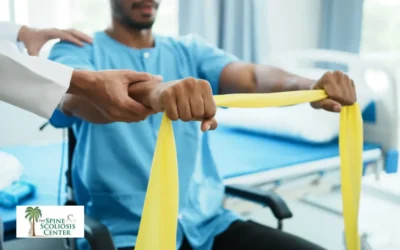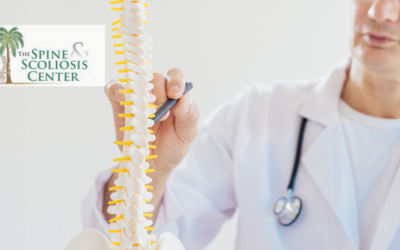As humans age, the cushioning in their spine begins to wear away in a condition known as degenerative disk disease. This condition is the most common in adults who are older; most people experience a certain amount of spinal degeneration after age 40. Pain relief and increased mobility can typically be achieved through the right treatment.
Breaking Down Degenerative Disk Disease
Between the bones in your spinal column (vertebrae) lie little spinal disks that act as rubbery cushions, allowing you to bend, move, and twist without discomfort through absorbing shock. Over time, these spinal disks wear away through the normal aging process. As the cushions start to wear away, the bones begin rubbing together, resulting in problems such as pain and:
- Herniated disks
- Adult scoliosis
- Spondylolisthesis
- Spinal stenosis
Intervertebral disk degeneration is extremely common in older adults; nearly every adult has some form of disk degeneration after they turn 40, even if they are fortunate enough to not suffer from overt symptoms. Around 5% of adults get back pain due to this problem.
Risk Factors
Older adults are at the highest risk of getting degenerative disk disease, as noted above. Other factors that raise your likelihood of developing the condition include:
- Obesity
- Acute injuries like falling
- Smoking
- Biological sex, as females are more likely to develop symptoms
- Working a job that is physically demanding for long periods of time
Symptoms
Neck pain and back pain are the most common markers of degenerative disk disease. The types of pain that you may experience include:
- Pain that flashes through weeks or months at a time
- Pain that radiates down your buttock area and through your lower back
- Pain that leads to tingling or numbness in the legs or arms
- Pain that gets worse with bending, sitting, or lifting
Causes of Degenerative Disk Disease
As noted above, spinal disks wear down through the normal aging process. Other factors that may contribute to this condition include:
- Spinal disks that dry out
- Spinal disks that tear or crack through minor injuries, causing a herniated disk
Diagnosing Degenerative Disk Disease
When your healthcare provider is diagnosing degenerative disk disease, they will typically begin by asking you to tell them about your symptoms. Depending on your answers, your healthcare provider may employ imaging scans like CT, X-ray, or MRI, which can show your healthcare provider the alignment and state of your disks. They may also check the following through conducting a physical exam:
- Pain levels: Your provider may measure your pain levels by pressing or touching on specific areas of your back
- Nerve function: Your provider may check your reactions with a reflex hammer
- Strength: Degenerated disks or nerve damage may result in muscle shrinking (atrophy) or weakness
Contact Us Today
Degenerative disk disease is extremely common in older adults, and can usually be alleviated through noninvasive treatments like spinal injection and physical therapy. If the pain is extremely severe, a spine specialist can assist with determining the best treatment for you. Call The Spine and Scoliosis Center to schedule an appointment today.




0 Comments